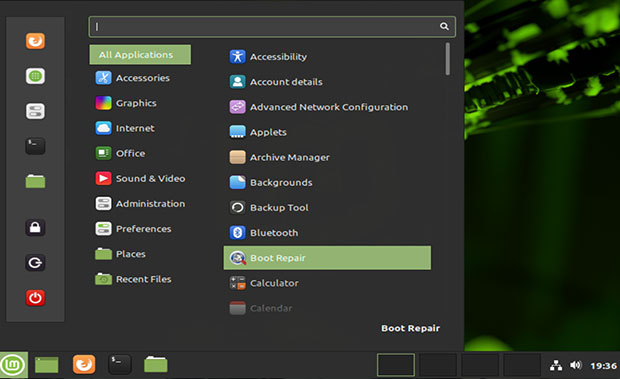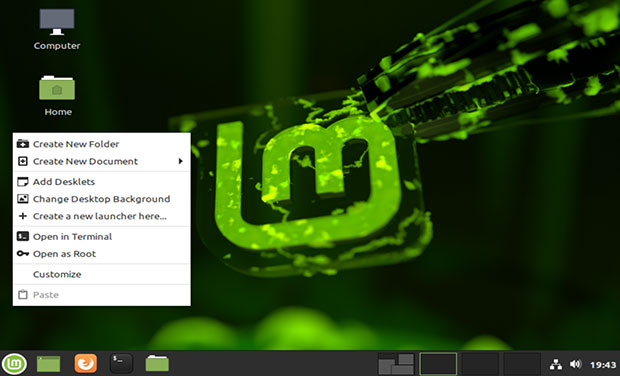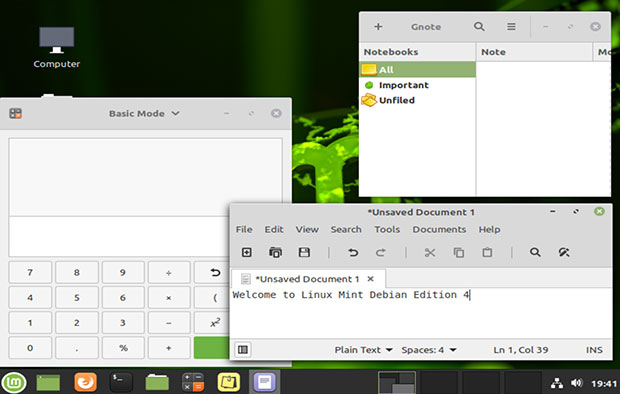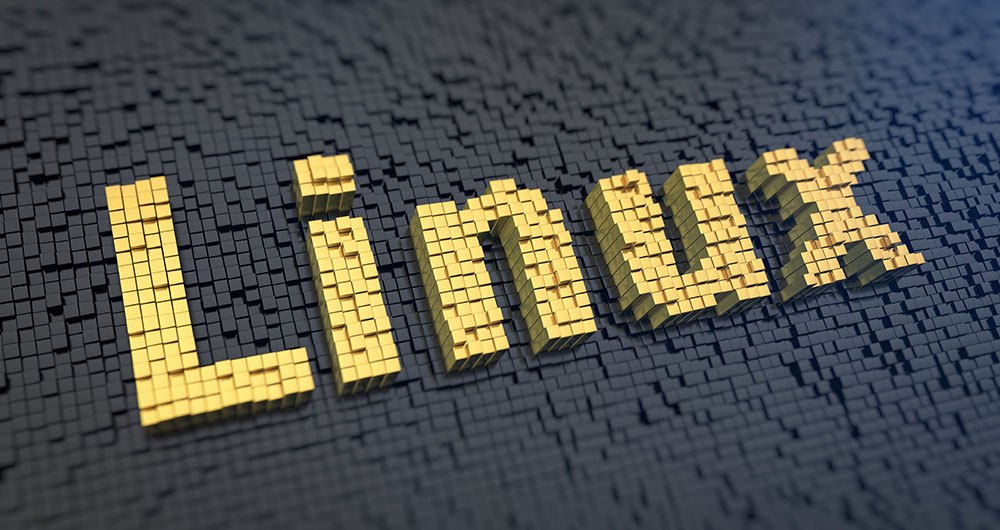Linux Mint Debian 4, or LMDE4, is now available. Does it really matter whether you run this latest Linux Mint release, based on Debian Linux, instead of Linux Mint 19.3, based on Ubuntu Linux?
The answer depends on two things. One is your personal computing philosophy regarding refresh cycles and leading-edge technologies. The other is what you want in terms of a computing experience — such as new features, reliability, performance, and style.
Also, consider a related question: How does LMDE4 compare to running pure Debian Linux?
That answer may not be important to a distro hopper bouncing around new releases looking for a comfortable fit or something new. For most users who prefer the Cinnamon desktop, nothing about LMDE4 raises satisfaction or performance concerns.

LMDE4 is solid, with no known issues that would discourage its use. Still, the Debian base does have differences that might complicate the decision-making process for advanced users.
The Linux Mint Debian release is a bit more involved than stuffing a Cinnamon environment into a pure Debian OS. After all, the Debian Linux community already offers a Cinnamon edition. So is LMDE4 merely a clone of the Debian flavor?
Family History
LMDE4, released March 20, is largely a catch-up version of Linux Mint 19.3, released in December. Unless you are a staunch user of the Cinnamon desktop, LMDE may not be useful to you. LMDE does not offer the MATE and Xfce desktop editions available with the Ubuntu-based version of Linux Mint.
Version 3 of Linux Mint Debian Edition debuted in late summer 2018. So this new release of LXMD4 “Debbie” is a welcome arrival for Linux users eager for a Debian alternative to the standard Ubuntu-based standard Linux Mint versions. Of course, Ubuntu is a derivative of Debian, so most of the differences are buried under the hood.
Using LMDE instead of the regular Linux Mint with an Ubuntu base is more stable and secure. Debian Linux deliberately retains older packages longer to ensure security and stability, making LMDE less cutting-edge.
What’s New
The LMDE4 release brings improvements that were shipped with Linux Mint 19.3 last December. These features include Cinnamon version 4.4, new default software, a boot repair tool, and more.
The release comes less than a month after the beta images became available. That suggests developers had little to fix getting the final release out the door.
With LMDE4 out of the way, the Debian-based developer team can focus fully on the upcoming Linux Mint 20 release, which is due sometime this summer. Linux Mint 20 will mark the biggest update to the operating system since 2018.
Since LMDE gets a major update only annually, the new features and refinements targeted for Linux Mint 20 in the Ubuntu edition will not be implemented until much later this year.
Different Strokes
Unlike typical Linux Mint versions that use Ubuntu as the base, LMDE uses Debian Stable and is offered only with the Cinnamon desktop. The Linux Mint community offers its flagship distro based on Ubuntu Linux in three desktop versions: Cinnamon, Mate, and Xfce.
The software packages included with Debian Stable are tested thoroughly for security and stability. Thus, they are considered to be a bit more stable than the Ubuntu packages shipped with standard Linux Mint flavors.
LMDE is an experimental release. Developer Clement Lefebvre created the Debian-based version of Linux Mint as insurance against developments that might make Ubuntu unavailable or out of tune with the Linux Mint community’s desires.

Differences Inside
The Debian version is different under the hood. Those differences might make the Debian-based edition less suitable for more demanding Linux users.
For example, the software package base comes from Debian repositories instead of Ubuntu repositories. Another difference is the lack of point releases in LMDE.
Mint system and desktop components are updated continuously in a semi-rolling release process as opposed to periodic point releases. The only application updates between each annual major upgrade are bug and security fixes.
In LMDE4, the Debian 10 Buster package base with the backports repository will stay the same until LMDE5 is released next year. That is a significant difference.
A noticeable difference is related to system setup. Because LMDE4 is wired to the Debian base, it does not let you select to install codecs as part of the installation process. Instead, you have to wait until the installation is finished. Go to the sound and video main menu section and select the option to install multimedia codecs.
This is not really a big issue. It does illustrate one example of how LMDE4 is different than the standard Ubuntu-based Linux Mint flavors.

First Impressions
I am a bit picky about what I demand in my workhorse Linux OS. I am partial to both Debian and the breakaway Ubuntu offerings over other Linux distributions related to Arch, RedHat, OpenSUSE, or Gentoo.
I run distros on my work desktop and laptop computers, which are powered by either Cinnamon or KDE Plasma desktops. I admit, Xfce still lingers on some of my older gear.
I have had a few ongoing issues with Linux Mint in recent years, primarily performance glitches with the way the Cinnamon desktop is integrated. Those issues do not occur in alternatives such as Feren OS and the newcomer release Ubuntu Cinnamon Remix.
I was pleased with my initial contact with LMDE3. My hands-on testing of LMDE4 confirmed my pleasant reactions. This latest release checks all the boxes.
What Else to Know
LMDE4’s system requirements make it suitable to run on most computers that have avoided the trash pile. The 64-bit ISO is recommended for all computers sold since 2007, assuming they are equipped with 64-bit processors.
The 64-bit ISO can boot with BIOS or UEFI. The 32-bit ISO can boot only with BIOS.
You need a machine configured with at least the following:
- 1 GB RAM (2 GB recommended for comfortable usage)
- 15 GB disk space (20 GB recommended)
- 1024×768 resolution
The LMDE ISO loads into a live session, letting you test your computer’s performance without interfering with the hard drive or the installed operating system. You can also install LMDE4 from the live session.
The ISO and the live installer use a structure that differs from other distributions. Installing directly from the ISO is your best option. If you use Yumi (Your Universal Multiboot Installer) or other multiboot technologies, LMDE will not install properly.
One very nice change is how LMDE4 displays in VirtualBox. It defaults to a minimum resolution of 1024×768, giving the OS the look and feel more consistent with running it on an actual computer.
New Feature Highlights
Remember, many of the package upgrades bring LMDE4 more up-to-date with what is available in other distro releases within the Linux Mint and Ubuntu repositories. Key to this release is the inclusion of the latest desktop version, Cinnamon 4.4, and some of the standard Linux Mint 19.3 improvements like HDT, boot-repair, system reports, language settings, HiDPI, and artwork improvements.
LMDE4 also has the new Linux Mint boot menus and newer versions of Celluloid, Gnote, Drawing, and XApp status icons. Plus APT recommends are enabled by default for package installations.
Still, some of the more essential packages for users lag behind. For instance, LMDE4 comes with LibreOffice version 6.1.5.2. The version running on my main desktop is 6.4.2.2.
Many of the targeted improvements in LMDE4 make the Debian version easier to install and set up. Much of the credit for that goes to the revamped installer, which also added support for secure boot and NCMe (Non-Volatile Memory Express) for computers with an SSD or solid-state drive installed.
Some of the latest hardware technologies are beefed up — such as support for Btrfs subvolumes and automated storage drive partitioning with support for LVM and full-disk encryption. Add to that a home directory encryption option and support for automated installation of Nvidia drivers and microcode packages.
Bottom Line
LMDE4 works as intended. It is a more polished release overall than last year’s version 3. It proves the developer’s experimental intent. Linux Mint certainly can carry on with relatively minor changes should there ever be a parting of ways over the continued use of the Ubuntu Linux base.
What could make LMDE a better proposition going forward? Adding more diversification with a choice of MATE and Xfce desktops.
That would put the Debian-based Linux Mint variant on a more equal footing. In turn, the additional options could create interest in a Debian Linux-based alternative for potential new Linux Mint users who do not want the Cinnamon desktop.
Suggest a Review
Is there a Linux software application or distro you’d like to suggest for review? Something you love or would like to get to know?
Email your ideas to me, and I’ll consider them for a future column.
And use the Reader Comments feature below to provide your input!
























































I am coming from using Debian 10.3 in production, and Void Linux in development. So far, I am impressed with LMDE4.